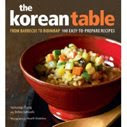NAOMI Joshi, mother of three and director of a nonprofit organization in Boston, still happily packs a lunch for her 15-year-old daughter, Emily, throwing in a sesame bagel with whipped cream cheese, a yogurt stick, a bottle of sparkling water, an apple, carrot sticks, and a package of graham cracker cookies.
''This is one way I know that she will have something nourishing to eat and she does appreciate it,'' says Joshi.
But do we really have control over what our children eat at school?
It is no surprise that the greatest number of children bringing lunch from home is in the elementary grades. At the Cyrus E. Dallin Elementary School in Arlington, students eat lunch in their classrooms. One day recently, the members of Susan Dreskin's kindergarten class spilled the contents of their cool canvas lunch bags - with mini ice packs and pockets for every purpose - onto the tables. The usual suspects appeared: peanut butter and jelly, bologna and cheese sandwiches, crackers, juice boxes, chips, pudding-in-a-cup, cookies, pretzels, fruit roll-ups, some carrot sticks, some fruit.
The children were eager to tell who made their lunch (mostly mom) and who decided what was packed (mostly mom). What would parents say, though, if they knew their children were eating their meal backward? Snacks first, two bites of a sandwich, and finito.
There were plenty of new hyper-convenient products, among them packaged lunches with deli meat and cheese squares, drink, and snacks, including a whopping 50 percent of the daily allowance for sodium. Tyler had ''portable yogurt'' in a tube. He squeezed, and aqua-colored, cotton candy-flavored yogurt oozed. ''Wanna taste?''
Standing by the trash can was illuminating. Much of the lunches was thrown away; barely eaten sandwiches were dumped. Linda Baker, mother of four, was on lunch duty and said she feels the kindergartners were bringing too much food for such little stomachs. ''These kids have snack at 10 and lunch at 11,'' she said. ''They are not that hungry.''
One little girl, Amelia, brought pizza, which she licked for 15 minutes, then gnawed mouse-like around the edges, and threw away.
In a third-grade class, the boys and girls sat separately, by choice. Though peanut butter still outnumbered other sandwiches, there was more variety and most said they made the requests and parents complied. Salads, kiwi, tuna, grapes, hot soup, bagels, and yogurt accompanied multiple snacks. Most of the lunches were consumed, but still there was significant waste.
According to Mary Scott, teacher's assistant and lunch monitor, ''The kids are given way too many snacks and then throw away most of the food. Parents should pack good lunches and what the kids really eat.''
Phoebe, a vegetarian, had vanilla yogurt, fruit, muffin, and water. Great meal, but she hovered about her friends waiting for leftover tater puffs.
At the Ralph B. O'Maley Middle School in Gloucester, Mark Lidano, food service director for the Gloucester public schools, said about 60 percent of the students buy from the school lunch program, and middle-school students are tough to please.
One recent day, friends Heidi, Emily, Katie, and Lauren giggled as they displayed their lunches. The girls had an average of at least five items each and the sandwiches seemed incidental.
''Middle-school kids are always hungry,'' said sixth-grade teacher Tina Cirarametaro. Indeed, very little food was thrown away.
Peanut butter was still popular and parents were still making the lunches. Stacy, an articulate sixth-grader, said her mom knew by now what she liked: tuna, yogurt, chips, and punch, all packed neatly with an ice pack.
Ross said, ''My Mom makes the sandwich, I pack the extras.''
Amid his protests, several hands were grabbing for those extras.
The line for food was long and the search for brown baggers brief during a recent visit to Cambridge Rindge and Latin School's atrium-like cafeteria. Ninth-graders Ben and Paul said they usually bring their lunch to avoid waiting in line. Ben had a bagel and cream cheese. He snorted when asked if either parent made his lunch.
Paul's mother made his, however: PB&J and a banana. He said sheepishly,
''I'm pampered.''
Two more lunch periods yielded only a few more students with packed lunches. Eyes rolled when students were questioned about what kept most of them from bringing lunch to school. Time and lack of choices were the answers.
Rob Clickstein, food service director for the Cambridge public schools, said few high school students bring lunch to school, although participation in the food service program is only 20 percent at the high school. Many students buy lunch off campus.
Some students eat nothing for lunch. Linda Baker's 11th-grade daughter at Arlington High School eats when she gets home and just has a cola at school. She says she doesn't have time to eat and the lines are too long. Her mother's take is that ''this is an age when you look a lot cooler drinking a Coke than eating a PB&J. There is definitely peer pressure.''
For the students who do bring lunch, the bag is empty when they return home, the money spent, and assurances given when asked, ''Did you have a good lunch today?''
Andrea Gulezian, a registered dietician with the University of Massachusetts Nutrition Education Program, says pointedly, ''It's a parent's responsibility to offer good food, and it's the child's responsibility to eat it.''
Gulezian, Clickstein, Lidano and Cindy Juncker, nurse leaader for the Gloucester public schools, offer these lunch tips for parents:
Reduce the number of snack foods.
Enhance the main food item.
Make lists and shop with the student.
Vary the breads: mini bagels, pita, rolls, lavosh.
Prepare most of the meal the night before.
Freeze sliced meat (in portions) and bread. They will thaw during the morning before lunch and keep the sandwich fresh.
Use small ice packs when sending perishables if the student is not eating the food within two hours.
Try new spreads: apple butter (a great alternative for children allergic to peanut butter), hummus, Ajvar (a roasted red pepper and eggplant spread).
Keep convenient, healthy foods available.
Offer three choices for main item. Let the student choose.
Try not to deny treats. They are fine in moderation. Children will find a way to have them even if they are not allowed.
Jaffa/Yafo at Dusk
13 years ago



